Books & Beyond
Celebrating a half-century of Swem through its unique collections
April 1, 2016
Kelley Freund
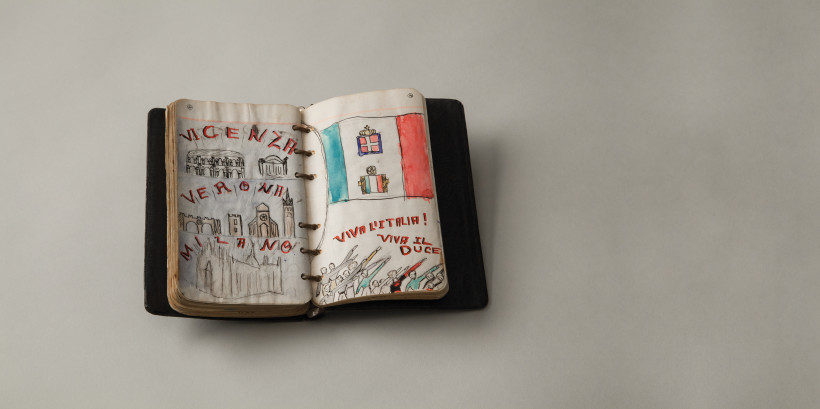
In the 1700s, when William & Mary's library was housed in the Wren Building, students had to pay 10 shillings a year to use it and could borrow one book at a time between the hours of 9 and 10 a.m. on Mondays and Fridays. Over two centuries later, things are drastically different.
You might say it all started with Earl Gregg Swem. William & Mary's librarian from 1920-1944, Swem made the College's library (housed in Tucker Hall during Swem's time), more accessible by offering classes on library use and, in a practice almost unheard of at the time, opening the stacks to students and the public. Under his leadership, the library's collection grew from 45,000 books and manuscripts to more than 640,000, and his collecting efforts formed the basis of what would become the Special Collections Research Center. Swem died at 94 in 1965, a year before the completion of the library that carries his name.
Since its opening 50 years ago, Earl Gregg Swem Library has carried on its namesake's legacy by remaining central to the academic and social experience at William & Mary. With over 800,000 visitors last year, the College community relies on Swem as a place to be productive, to collaborate and to connect with both peers and resources. Among those resources are 1,909,968 books, 15,084 films and videos, the second-largest collection of books about dogs in the United States and a first edition of The Book of Mormon. Swem continues to attract students and faculty to its unique spaces, including high-tech classrooms, multimedia production studios and study areas. In 2015, the library was ranked 17th in the nation in Princeton Review's list of the best college libraries, a ranking based on student surveys. It was the highest-rated academic library in the state of Virginia.
Looking ahead at the next 50 years, Swem Library sets its sights on creating student assistantships, digitizing its unique and one-of-a-kind materials to make them accessible to scholars worldwide, and continuing to invest in library spaces. In the meantime, we take a look at some of the items housed inside that define what Swem is all about - from unique items and new technology to partnerships across campus.
Warren Burger's Briefcase
Special Collections is home to the papers of the late Warren E. Burger, chief justice of the United States and the College's 20th chancellor. While the collection will not be open to researchers for many years at the request of Burger, the first floor of Special Collections features an exhibit recreating his retirement office. Many objects actually used by Burger are on display in the Burger Office, including this briefcase, which Burger likely used during his time as assistant attorney general. The university announced in October 2013 that William & Mary Chancellor and former U.S. Secretary of Defense Robert M. Gates '65, L.H.D. '98 will donate his professional papers to William & Mary, also to be housed in Special Collections. Gates' papers encompass his time at the CIA, his service at the National Security Council, his Texas A&M University presidency, his term as secretary of defense and his role as William & Mary's chancellor, including his handwritten notes, photographs, and various materials he accumulated over the course of his career in public service.

TRAVEL DIARY
This handwritten travel diary by a 14-year-old Victoria Brown documents a trip to Europe taken from August to November 1935. The Brown family traveled across the United States from California to New York, then stayed in Paris before visiting Rome and other cities in fascist Italy. The diary features a description of a fascist rally in Rome and dozens of sketches of flags, uniforms, theater costumes and street maps. The bulk of the 429 pages contains comments on the historic sites, museum collections, and neighborhoods she visited during her trip. Brown's diary constitutes an important document, especially with its description of political events unfolding in the decade before World War II. Swem Library purchased this diary on eBay. Ève Bourbeau-Allard M.A. '15, a 2014-15 archives apprentice in Special Collections, was tasked with processing and describing the diary. "This assistantship has not only stimulated my professional interest in archives management, it also gave me the opportunity to learn so much about a variety of peoples and topics through the collections I processed," says Bourbeau-Allard. Read the section on the Gary Family papers below to learn more about Bourbeau-Allard's work at Swem.
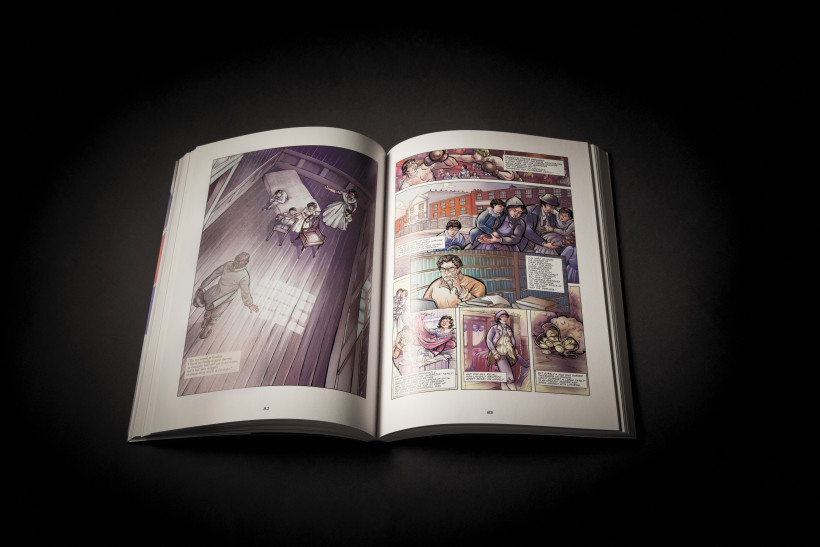
GRAPHIC NOVEL
Swem doesn't just provide support to students. Librarian-faculty partnerships are an integral part of the Swem experience as well. Mendoza the Jew, a graphic novel written by W&M history professor Ron Schechter, tells the story of a Jewish boxer and explores issues of gender and nationalism in late 18th-century Britain. Schechter sought out the library's help for research assistance - specifically 18th-century images to provide to the novel's illustrator so she could produce historically accurate pictures. He found support in the form of Arts Librarian Kathleen DeLaurenti. "It takes an extremely skilled reference librarian with a keen understanding of visual culture to help with a project such as this one," Schechter says. "I was blown away by how helpful Kathleen was. She taught us some tricks to navigate the Swem catalog more effectively than I have ever been able to do on my own, and her command of the electronic sources was more than proficient. It was actually kind of breathtaking."
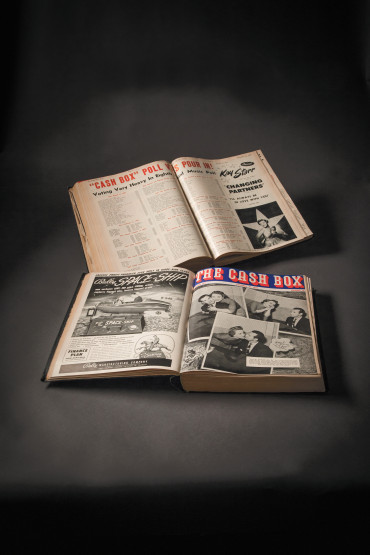
CASH BOX MAGAZINE
In January, Swem Library received a $60,000 grant from the Council on Library and Information Resources to digitize its entire run of Cash Box, a music trade magazine published from 1942-1996. An alternative to Billboard Magazine, Cash Box printed regional chart data and featured news of tours and album summaries. "Cash Box's formula relied more heavily upon jukebox 'plays,' and thus are often a much more reliable window into trends of more subcultural markets such as African American-dominated rhythm and blues or white working-class country," says Jay Gaidmore, director of the library's Special Collections Research Center. Since acquiring the issues in 2010, Swem has received more requests for copies or information from Cash Box than from any other individual collection in Special Collections. An invaluable source for the study of music, the music industry and popular culture in the second half of the 20th century, Cash Box benefits researchers in not just music, but also history, Africana studies, and literary and cultural studies. With the digitization of this unique collection, Swem is putting Cash Box into the hands of scholars across the globe.
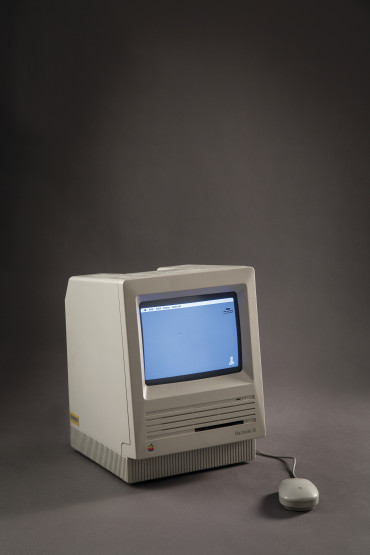
VINTAGE MAC
This 1984 Macintosh computer sits on a desk in the Reeder Media Center. Nobody can find a keyboard for it, but it still works. As computers and the Internet have changed over the past 30 years, so too have libraries and the collections they provide for student and faculty research. Today, over 80 percent of the library's collections budget is spent on materials accessed over the Internet, including e-books, e-journals, databases and streaming video. There are hundreds of library databases, ranging from ones that anyone might recognize, like Ancestry.com and Morningstar, to world-class collections of historical documents, newspapers and archival collections. Swem Library is leading the way with outreach and consulting to connect these materials to the curriculum and research interests of students and faculty. Swem is also providing more alumni access, inviting former Tribe members to take advantage of the library's resources. Alumni can check out books, use computers and get research help. They can also access two of Swem's online databases, JSTOR and Project Muse, anywhere off campus.
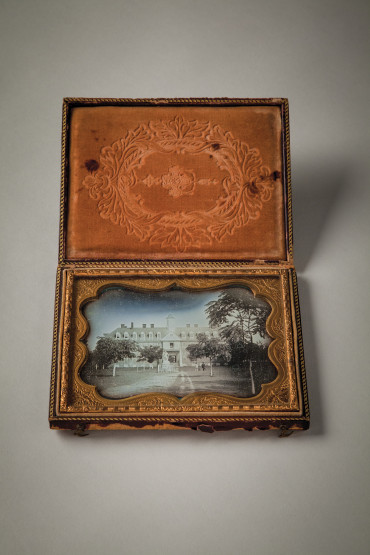
WREN
DAGUERROTYPE 1850s
This image of the College Building, later named the Sir Christopher Wren Building, can be found in the University Archives Photograph Collection. The College's original library was located in the Wren Building and consisted of over 200 books donated by Francis Nicholson, governor of Virginia from 1698 to 1705. This library was destroyed in the fire of 1705. After the building was rebuilt, so was the collection. William & Mary owned over 4,000 books by 1793, making it the second-largest collegiate library in the United States, behind only Harvard. But the library suffered additional damage during the Siege of Yorktown in the Revolutionary War, and was again destroyed in the fires of 1859 and 1862. After the College reopened following the Civil War, the library remained in the Wren Building until 1909. In 1905, Andrew Carnegie pledged $20,000 for the construction of a new library on campus. The building was just called the Library, and served as such from 1909 until 1966 in the building now known as Tucker Hall. In 1966, Earl Gregg Swem Library opened. There were renovations and additions to the building in 1986-1988 and 1998-2005.
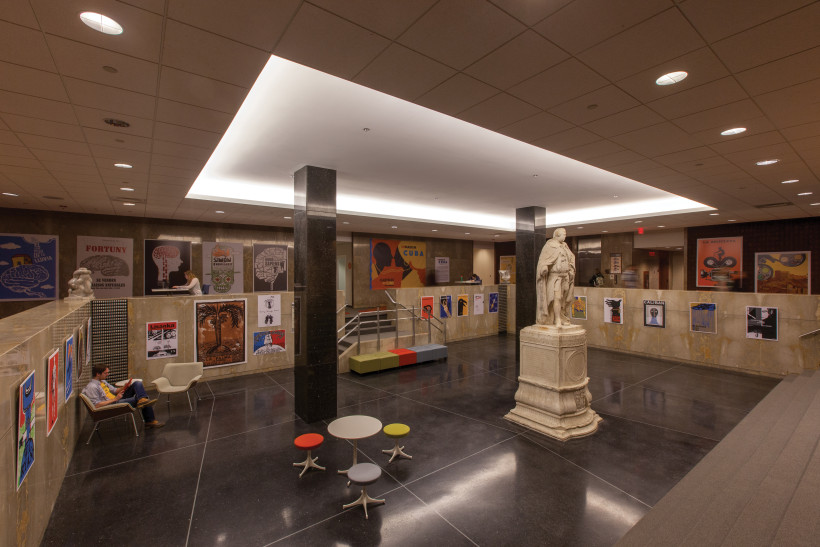
UNMADE IN CUBA
While film posters usually draw attention to movies that are playing on screen, the exhibit that opened in February in Swem's Botetourt Gallery features posters of Cuban films that were never made. Unmade in Cuba: Carteles de Cine is presented by W&M Libraries in partnership with students in W&M's New Media Workshop, co-taught by Ann Marie Stock, professor of Hispanic studies and film and media studies, and Troy Davis, director of the Reeder Media Center. As part of this COLL 300 course, students research the posters' artists and filmmakers - connecting with many of them - to create onsite and online exhibits. The posters are now part of Swem's W&M Cuban Culture Collection housed in Special Collections. "The material is extraordinary, tracking as it does the accelerated changes on the island during this time," Stock says. With Swem's help, Stock plans on inventorying and archiving items she has collected during more than 60 research trips to Cuba over the past 25 years. "Libraries are natural partners when it comes to supporting digital projects and faculty research," says Carrie Cooper, dean of university libraries. "The materials that have been acquired on trips and the stories that have been captured along the way will highlight the institution's work in Cuba."
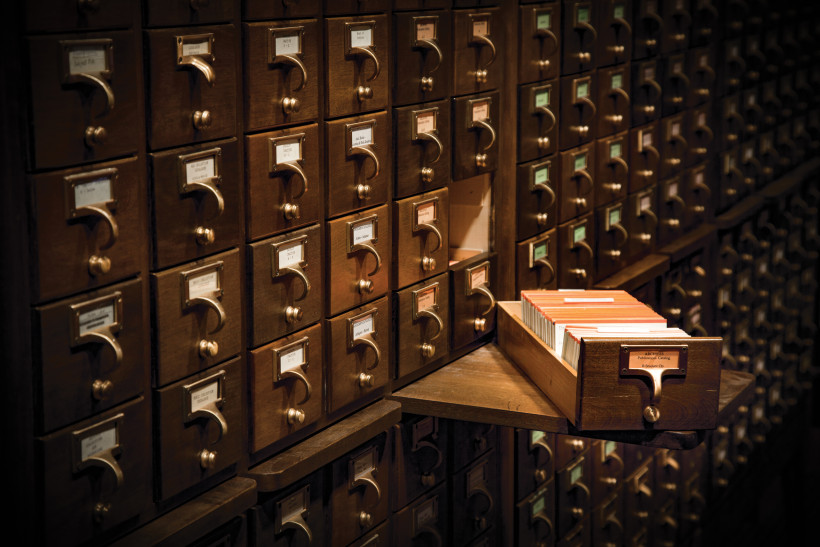
CARD CATALOG
Before the days of readily accessible computers, card indexes were the only way to create a database. Susan Riggs, current Frances Lightfoot Robb Special Collections Librarian, was hired in 1986 to work with the manuscripts collections catalog. The catalog was intended to solve the problem of what collection's inventory to pull if a patron wanted information on a subject. "Those inventories were contained in shelf after shelf of binders," says Riggs. "Knowing what to pull depended on the memory of the archivist or curator." The process to create the catalog was to go through the paper inventories that had been created for the various collections, pick out pertinent people and subjects, and write a card that would indicate which collection, which box and which folder the person or subject was placed. By the time Riggs was hired, inventories were being created on computers, but the cards still had to be typed, and was done by students. In 2007, Swem implemented an online database. "This computer automation made continuing the old card catalog system moot," Riggs says. "We froze it but, we did not throw it away, as there are some concepts it retains that may not be findable using keywords. And besides, it looks neat!"
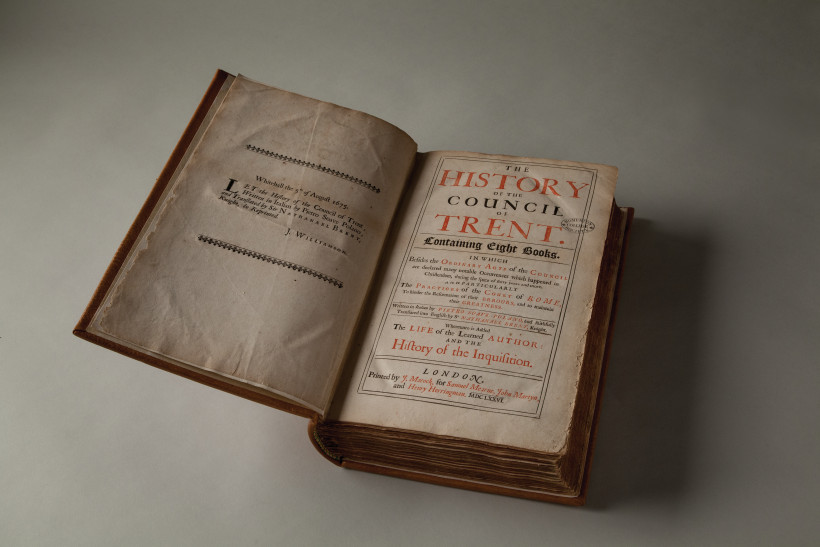
THE SURVIVING VOLUME
In 1942, Earl Gregg Swem received a strange letter from a librarian in Bristol, England. During a book salvage drive, the librarian had discovered a volume bearing an inscription to the College dated 1704 and was writing to inquire if the university would like to have the book returned. World War II postponed the delivery until 1946; in the meantime it was stored in a bomb shelter. According to the flyleaf inscription, the book, a 1676 edition of The History of The Council of Trent by Paolo Sarpi, was a gift from a Captain Nicholas Humfrys. Humfrys appears to have been a Virginian - his ship, the Hartwell, was registered with the naval officers in the York River, and he is mentioned several times in the minutes of the governor's council, a group that included William & Mary's first president, James Blair. If the book was in fact given to the school in 1704, it can be traced to William & Mary's original library, which was destroyed by fire in 1705. Questions of how this book survived - or whether it ever made it to the College in the first place - and how and when it got to Bristol still remain.
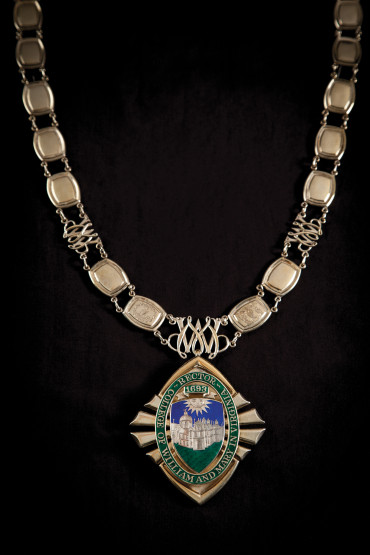
RECTOR BADGE
Special Collections displays the College of William & Mary regalia in the Special Collections lobby when it is not in use for official university functions including Opening Convocation, Charter Day and Commencement. The exhibit features the College mace, marischal mace, badge and chain of Office of the Rector of the Board of Visitors (shown here), and the badge and chain of Office of the Chancellor. The rector's badge contains the coat of arms of the College and is suspended from the W&M cipher. The seal of the Commonwealth of Virginia and the arms of the London Company are engraved on the chain. W&M's first female rector, Anne Dobie Peebles '44, gifted the badge to the College in 1987. The badge and chain of office were hand-crafted by the firm of Thomas Fattorini of Birmingham, England as a companion piece to the Chancellor's badge.
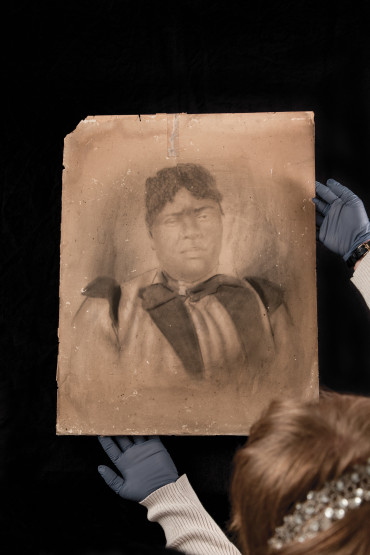
CHARLES GARY FAMILY PAPERS
In 1997, William & Mary purchased property on Ironbound Road from a prominent African-American couple, Charles and Zelda DeBerry Gary, longtime residents of Williamsburg. Charles was the owner of the West End Valet Shop, a dry cleaning and tailoring business off Prince George Street, and Zelda was a nurse who once worked for the James City County school system. Both enriched the community through civic involvement in local organizations. In the spring of 2015, a team from W&M's Facilities Management, recognizing their value, rescued from the house a few boxes of documents and artifacts belonging to the Garys. The department contacted Susan Kern Ph.D. '05, executive director of the Historic Campus, who in turn contacted the Special Collections Research Center. As an archives apprentice in Special Collections, Ève Bourbeau-Allard M.A. '15, who also worked on Victoria Brown's travel diary, was able to process the collection from start to finish. Among the letters, photographs and business papers were some charcoal drawings, like this one of an unidentified African-American woman. "As a result of this team effort, the papers are now arranged, described and preserved in the Special Collections Research Center," says Bourbeau-Allard. "They are of great value to the study of both 20th-century African-American history and Williamsburg history."
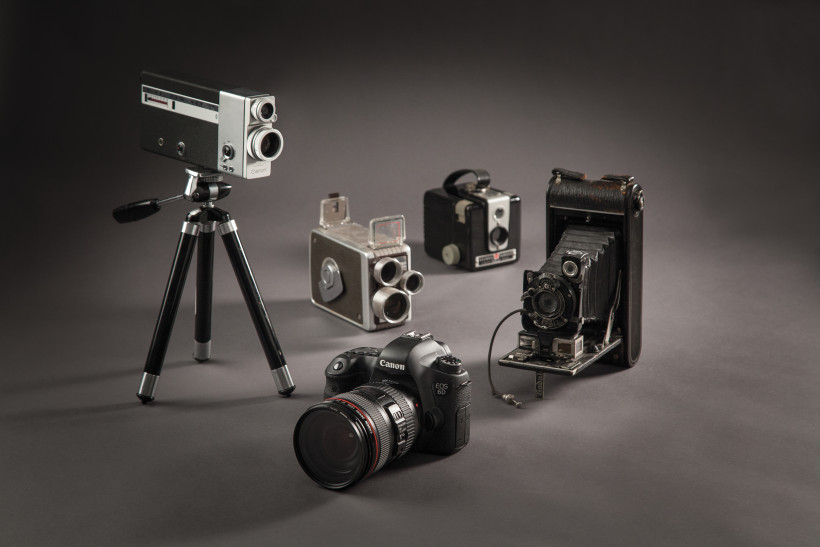
OLD & NEW CAMERAS
Walk into the Charles W. Reeder Media Center, and you'll see these cameras on a shelf to your left. Not only are these cameras cool to look at, they symbolize major shifts in technology, including those transformations happening on campus. The newly renovated Reeder Media Center (which opened in the spring of 2015) now boasts 11,000 square feet of space, a media lab with enhanced hardware and software for specialized multimedia work, two classrooms, a screening room, collaboration lab, and eight studios for media recording, production and mastering. With the overhaul of the media center, Swem is now poised to handle another change on campus - the implementation of the university's new liberal arts general-education curriculum, which requires digital literacy and multimedia communication in addition to traditional research assignments. Swem staff projects that demand for digital media labs and training will at least triple over the next five years. "Through the redesign of space, we've created a destination that supports the new curriculum," says Cooper. "We are better able to use our talent to assist faculty as they integrate media and technology into their teaching and student learning."